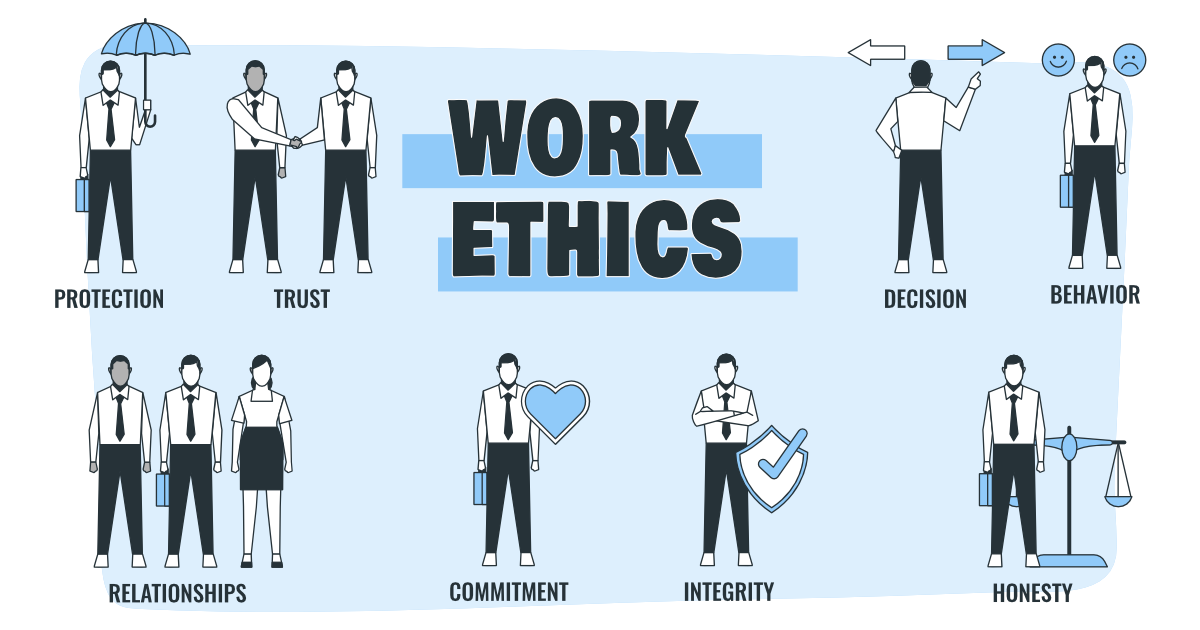Building relationships with investors and potential partners is crucial for entrepreneurs looking to raise capital and grow their business. Developing relationships with investors and potential partners can provide the necessary funding and resources to turn a business idea into a reality. It is also important to establish trust and open communication with these stakeholders to ensure that both parties’ interests are aligned and that the business is on the path to success. This sub-topic will cover strategies for identifying and approaching potential investors and partners, as well as building and maintaining these relationships over time.
Identifying and researching potential investors
Introduction: Building relationships with investors and potential partners is an important aspect of growing a business. Having the right investors and partners can provide not just financial support, but also valuable connections and expertise. However, finding the right investors and partners can be a challenge, especially for new entrepreneurs. It’s important to take the time to research and identify potential investors who align with your business goals and values. In this article, we’ll discuss how to identify and research potential investors for your business.
Best Practices
- Understand your business and its needs: Before you start reaching out to potential investors, it’s important to have a clear understanding of your business and its needs. This includes your business model, revenue streams, and growth plans.
- Identify your target audience: Not all investors are the same. Some may be focused on a specific industry or stage of business development. Identify the type of investors who would be a good fit for your business and its needs.
- Use online resources: There are many online resources available for researching potential investors. Websites like AngelList and Crunchbase provide information on investors, including their past investments and contact information.
- Network: Attend industry events and conferences to meet potential investors in person. This can be a great way to make connections and learn about potential investment opportunities.
Examples
- A startup in the clean energy industry may research potential investors who have a history of investing in clean energy companies or have a focus on sustainability.
- A small business owner looking to expand may identify potential investors who have experience in the retail industry and a track record of helping businesses grow.
References
- AngelList, https://angel.co/
- Crunchbase, https://www.crunchbase.com/
Building a professional pitch and presentation
When seeking funding or partnership opportunities, it’s important to have a well-crafted pitch and presentation that effectively communicates the value of your business. A strong pitch and presentation can help you stand out among the competition and make a lasting impression on potential investors or partners. In this section, we’ll discuss some best practices for building a professional pitch and presentation that will help you secure the funding or partnerships you need to grow your business.
Crafting a Compelling Pitch and Presentation
- Know Your Audience: Before creating your pitch and presentation, it is essential to understand who your target audience is and tailor your message to them. What are their pain points and what solutions does your business offer? How does your business align with their investment or partnership goals?
- Clearly Communicate Your Value Proposition: Your pitch and presentation should clearly communicate the unique value that your business offers to potential investors or partners. This includes highlighting the problem that your business solves, the size of the market opportunity, and your competitive advantage.
- Use Visual Aids: Visual aids, such as infographics, charts, and slides, can help to make your pitch and presentation more engaging and easier to understand. These visual aids should be used to supplement, not replace, your verbal presentation.
- Practice and Rehearse: Practice and rehearse your pitch and presentation multiple times before presenting it to potential investors or partners. This will help you to become more comfortable with the material and identify any areas that need improvement.
- Be Prepared for Questions: Be prepared to answer any questions that potential investors or partners may have about your business. This includes having financial projections, market research, and customer testimonials readily available.
Best Practices
- Keep it simple and to the point. Avoid using jargon or industry-specific terms that investors or partners may not understand. Instead, focus on the key points of your business and how it addresses a specific need or problem in the market.
- Highlight your unique selling points. Investors and partners want to know what sets your business apart from the competition. Be sure to clearly communicate your unique value proposition and how it differentiates your business in the market.
- Use data and statistics to support your claims. Numbers and statistics can be powerful tools in convincing investors or partners of the potential of your business. Use data to demonstrate the size of the market opportunity and the potential for growth.
- Show your team’s qualifications and experience. Investors and partners will want to know the team behind the business, including the experience and qualifications of key members. Be sure to highlight their relevant experience and skills in your presentation.
- Practice, practice, practice. Rehearsing your pitch and presentation can help you deliver it with confidence and reduce the chances of stumbling over your words. Practice in front of a mirror or with a small group to get feedback and make adjustments.
Example
A pitch and presentation for a new app that connects local farmers with consumers in their community might include the following key points:
- The app addresses a specific need in the market by providing a convenient way for consumers to access locally-sourced produce.
- The app’s unique selling point is its ability to track the origin of the produce, allowing consumers to know exactly where their food comes from.
- Data and statistics are used to show the size of the local food market and the potential for growth.
- The team behind the app is highlighted, including relevant experience in agriculture and technology.
- The pitch is rehearsed and refined to effectively communicate the value of the app and secure funding or partnerships.
Some successful pitches from tech startups
Dropbox:
- 2007: Drew Houston and Arash Ferdowsi, the founders of Dropbox, raise $1.2 million in seed funding from Y Combinator, Paul Graham, and a group of angel investors.
- 2008: Dropbox raises $6 million in Series A funding from Accel Partners.
- 2009: Dropbox raises $10 million in Series B funding from Greylock Partners and Accel Partners.
- 2010: Dropbox raises $25 million in Series C funding from Index Ventures, Benchmark Capital, and Goldman Sachs.
- 2011: Dropbox raises $250 million in Series D funding from Index Ventures, Benchmark Capital, Goldman Sachs, and other investors.
- 2014: Dropbox raises $350 million in Series E funding from BlackRock and other investors.
- 2015: Dropbox raises $600 million in Series F funding from BlackRock and other investors.
- 2018: Dropbox raises $485 million in debt financing from Goldman Sachs, JPMorgan, and other investors.
- 2019: Dropbox raises $1.7 billion in debt financing from Goldman Sachs, JPMorgan, and other investors.
Airbnb:
- 2007: Co-founders Brian Chesky and Joe Gebbia launch the company under the name “AirBed & Breakfast” in San Francisco, offering air mattresses and a homemade breakfast to attendees of a design conference who were unable to find lodging.
- 2008: The company raises $20,000 in seed funding from angel investors.
- 2009: The company raises $600,000 in funding from Sequoia Capital and Y Ventures.
- 2010: The company raises $7.2 million in a Series A funding round led by Greylock Partners.
- 2011: The company raises $112 million in a Series B funding round led by Andreessen Horowitz, with participation from DST Global, General Catalyst Partners, and others.
- 2012: The company raises $200 million in a Series C funding round led by TPG Capital, with participation from Founders Fund and others.
- 2013: The company raises $450 million in a Series D funding round led by TPG Growth, with participation from Dragoneer Investment Group and others.
- 2014: The company raises $475 million in a Series E funding round led by General Atlantic, with participation from Hillhouse Capital Group, Kleiner Perkins, and others.
- 2015: The company raises $1.5 billion in a Series F funding round led by Google Capital, with participation from Kleiner Perkins, Founders Fund, and others.
- 2016: The company raises $555.5 million in a Series G funding round led by Technology Crossover Ventures, with participation from GGV Capital and others.
- 2017: The company raises $1 billion in a Series H funding round led by GIC Private Limited, with participation from Hillhouse Capital Group and others.
- 2018: The company raises $1 billion in a Series I funding round led by Silver Lake Partners, with participation from Founders Fund and others.
- 2019: The company goes public on the NASDAQ stock exchange, raising $3.5 billion in its initial public offering.
- 2020: The company raises $1 billion in a private funding round led by Sixth Street Partners, with participation from Oaktree Capital Management.
Uber:
- 2007: Uber is founded by Travis Kalanick and Garrett Camp
- 2008-11: Uber raises $1.25 million in seed funding
- 2011: Uber raises $11 million in Series A funding
- 2011-13: Uber raises $37 million in Series B funding
- 2013: Uber raises $258 million in Series C funding
- 2014: Uber raises $1.2 billion in Series D funding
- 2014-15: Uber raises $1.6 billion in Series E funding
- 2015-16: Uber raises $3.5 billion in Series F funding
- 2016: Uber raises $5 billion in Series G funding
- 2016-17: Uber raises $2 billion in Series H funding
- 2017-18: Uber raises $8.6 billion in Series I funding
- 2019: Uber goes public with an initial public offering (IPO)
Slack:
- 2009: Stewart Butterfield, Eric Costello, Cal Henderson, and Serguei Mourachov launch Tiny Speck, a gaming company, with $17.8 million in funding from investors including Accel Partners and Andreessen Horowitz.
- 2010: Tiny Speck pivots to focus on its internal team-communication tool, which they call Slack.
- 2011: Slack raises $1.5 million in seed funding from Accel Partners, Andreessen Horowitz, and others.
- 2013: Slack raises $42.8 million in a Series A funding round led by Andreessen Horowitz, with participation from Accel Partners, Social Capital, and other investors.
- 2014: Slack raises $120 million in a Series B funding round led by Kleiner Perkins Caufield & Byers, with participation from existing investors Accel Partners and Andreessen Horowitz, as well as new investors Google Ventures, Horizons Ventures, and Institutional Venture Partners (IVP).
- 2015: Slack raises $160 million in a Series C funding round led by IVP, with participation from existing investors and new investors including Horizons Ventures, Spark Growth, and DST Global.
- 2016: Slack raises $250 million in a Series D funding round led by Thrive Capital, with participation from existing investors and new investors including Dragoneer Investment Group, T. Rowe Price, and Morgan Stanley Investment Management.
- 2017: Slack raises $427 million in a Series E funding round led by SoftBank’s Vision Fund, with participation from existing investors and new investors including Accel Partners, Andreessen Horowitz, and Kleiner Perkins Caufield & Byers.
- 2018: Slack raises $427.2 million in a Series G funding round led by Dragoneer Investment Group, with participation from existing investors and new investors including General Atlantic, GGV Capital, and Accel Partners.
- 2019: Slack goes public through a direct listing on the NYSE, trading under the ticker symbol WORK.
- 2020: Slack acquires the IP assets of Atlassian’s Stride and Hipchat for $166 million, and the company’s stock price hits an all-time high of $42.62 per share.
Stripe:
- In 2010, the founders of Stripe, Patrick and John Collison, presented a pitch to the venture capital firm Y Combinator. Their pitch highlighted the problem of difficult payment processing and how their company was providing a simple solution. This pitch helped them secure a $2 million investment.
Trello:
- In 2014, Michael Pryor, the co-founder of Trello, pitched his company at the Techstars NYC Demo Day. He effectively highlighted the opportunity in the market for project management software and how Trello was filling that gap. The pitch led to a $1.1 million investment from various investors.
Zoom:
- 2011: Zoom is founded by Eric Yuan.
- 2013: Zoom raises $6 million in Series A funding from Emergence Capital, Qualcomm Ventures, and Northern Light Venture Capital.
- 2013: Zoom raises $12 million in Series B funding from Horizons Ventures, Qualcomm Ventures, and other investors.
- 2014: Zoom raises $30 million in Series C funding from Horizons Ventures, Qualcomm Ventures, and other investors.
- 2015: Zoom raises $100 million in Series D funding led by T. Rowe Price, with participation from existing investors.
- 2017: Zoom raises $100 million in Series E funding from Sequoia Capital, with participation from other investors.
- 2018: Zoom raises $115 million in Series F funding led by Zoom CEO Eric Yuan, with participation from other investors.
- 2019: Zoom goes public, raising $356 million in an IPO at a valuation of $9 billion.
- 2020: Zoom raises $622 million in a secondary stock offering, bringing its valuation to $16 billion.
Grab (Singapore):
- This ride-hailing company started in 2012 and has since expanded to offer a wide range of services, including food delivery and digital payments. They raised over $6 billion in funding.
Paytm (India):
- This digital payments and financial services platform was launched in 2010 and has since grown to become one of the most widely used platforms in India. They raised over $3 billion in funding.
Careem (UAE):
- This ride-hailing company was founded in 2012 and is now one of the most popular transportation options in the Middle East. They raised over $1 billion in funding.
Maktoob (UAE):
- This online payment and e-commerce platform was acquired by Yahoo in 2009 for a reported $164 million.
Swvl (Egypt):
- This bus-hailing service was launched in 2017 and is now available in several cities in Egypt and other countries in the Middle East. They raised over $42 million in funding.
Go-Jek (Indonesia):
- This ride-hailing and on-demand services platform was launched in 2010 and has since grown to become one of the most popular platforms in Indonesia. They raised over $4 billion in funding.
Souq (UAE):
- This e-commerce platform was founded in 2005 and was acquired by Amazon in 2017 for a reported $580 million.
VNG Corporation (Vietnam):
- This internet and technology company was founded in 2004 and is now one of the largest technology companies in Vietnam. They raised over $10 million in funding.
It’s worth noting that these pitches were successful not only because they were able to effectively communicate the problem and solution but also because they were able to demonstrate a strong market opportunity and a clear path to monetization. Each of these startups had unique value proposition, business models and target market which helped them to raise funding, grow and get acquired.
Networking with investors at industry events and conferences
Networking with potential investors is a critical aspect of raising capital for your business. Industry events and conferences provide a valuable opportunity to connect with investors and showcase your business to a wider audience. By attending these events and actively seeking out potential investors, you can increase your chances of securing funding for your business.
Examples
- The annual SXSW Interactive Festival in Austin, Texas is a great event for startups to connect with investors and other entrepreneurs.
- The TechCrunch Disrupt event in San Francisco is another popular conference for startups to showcase their businesses and meet with investors.
- Many industry-specific conferences and events, such as the Consumer Electronics Show (CES) or the National Restaurant Association Show, also attract investors and provide opportunities for startups to network.
Best Practices
- Research the event and attendees ahead of time to identify potential investors who may be interested in your business.
- Prepare a professional pitch and have materials such as a pitch deck and business plan ready to share with investors.
- Dress professionally and make sure to have business cards on hand.
- Take the time to actively seek out potential investors, introduce yourself, and start a conversation.
- Follow up with any investors you meet after the event to continue the conversation and provide additional information.
In conclusion, networking with investors at industry events and conferences can be a valuable tool for startups looking to raise capital. By actively seeking out potential investors, preparing a professional pitch, and following up after the event, entrepreneurs can increase their chances of securing funding for their business.
Building a relationship with potential partners
Building relationships with potential partners is an essential step for any entrepreneur. Partnerships can provide access to new resources, networks, and expertise that can help your business grow and succeed. However, building these relationships can be challenging, so it’s important to approach the process with a strategic mindset.
Best Practices
- Identify potential partners that align with your business goals and values
- Research the potential partner’s business and industry
- Establish a connection through networking and industry events
- Build trust through clear communication and a strong working relationship
- Set clear expectations and goals for the partnership
Examples
- A tech startup partners with a marketing agency to help with their branding and digital marketing efforts
- A retail store partners with a local designer to create an exclusive clothing line
- A software company partners with a consulting firm to offer a bundled service package to clients
When it comes to building a relationship with potential partners, it’s important to identify partners that align with your business goals and values. Research the potential partner’s business and industry so you have a good understanding of their strengths and weaknesses, and how they might be able to help your business. Establish a connection through networking and industry events. Attend trade shows, conferences, or other events that are relevant to your industry and make an effort to meet potential partners. Building trust is key to any partnership, so make sure to communicate clearly, set goals and expectations, and strive to maintain a strong working relationship. Books like “Never Eat Alone” and “The Power of Partnerships” provide valuable insights on how to create and maintain successful partnerships.
Presenting a strong value proposition to potential partners
In the process of building relationships with potential partners, it is essential to present a clear and compelling value proposition. A value proposition is a statement that outlines the unique value that your business or product can provide to potential partners. It is important to have a well-crafted value proposition as it can help to attract and retain partners, increase revenue, and drive growth for your business. In this article, we will discuss how to present a strong value proposition to potential partners.
Best Practices
- Clearly define the problem that your product or service solves: The first step in creating a strong value proposition is to clearly define the problem that your product or service solves. This will help to establish the need for your product or service in the mind of potential partners.
- Highlight the unique features of your product or service: Make sure to highlight the unique features of your product or service that set it apart from competitors. This will help to demonstrate the value that your product or service can bring to potential partners.
- Show how your product or service can benefit potential partners: It is important to show how your product or service can benefit potential partners. This can include increasing revenue, reducing costs, or improving efficiency.
- Use data and statistics to support your value proposition: Using data and statistics can help to add credibility to your value proposition. This can include market research, customer testimonials, or financial projections.
- Test your value proposition with potential partners: Before presenting your value proposition to potential partners, it is important to test it with a small group of potential partners to gather feedback and make any necessary revisions.
Examples
- A software company that specializes in inventory management can present a value proposition to a retail partner by highlighting how their software can improve the partner’s inventory accuracy, increase revenue, and reduce costs.
- A consulting firm can present a value proposition to a manufacturing company by showing how their expertise in Lean Six Sigma can improve the partner’s operational efficiency, quality, and profitability.
In conclusion, a well-crafted value proposition is an essential tool in building relationships with potential partners. By clearly defining the problem that your product or service solves, highlighting unique features, and showing how your product or service can benefit potential partners, you can increase the chances of success in building mutually beneficial partnerships.
Resources and References
- “The Art of Raising Capital” by John D. May and Joel S. Moser
- “The Art of Raising Capital: Entrepreneur’s Guide to Going Public” by Drew O. McAdam
- “The Art of Raising Capital: Entrepreneurs and Investors Discuss the Funding Process” by Andrew Romans
- “Venture Capital for Dummies” by Nicole Gravagna
- “Venture Deals: Be Smarter Than Your Lawyer and Venture Capitalist” by Brad Feld and Jason Mendelson
- “Pitch Anything: An Innovative Method for Presenting, Persuading, and Winning the Deal” by Oren Klaff
- “The Art of Closing the Sale” by Brian Tracy
- “The Power of Persuasion: How We’re Bought and Sold” by Robert Cialdini
- “Never Eat Alone: And Other Secrets to Success, One Relationship at a Time” by Keith Ferrazzi
- “The Power of Partnerships: How to Create and Maintain a Winning Partnership” by Robert M. Galford
- “Value Proposition Design: How to Create Products and Services Customers Want” by Alexander Osterwalder and Yves Pigneur
- “Influence: The Psychology of Persuasion” by Robert Cialdini













